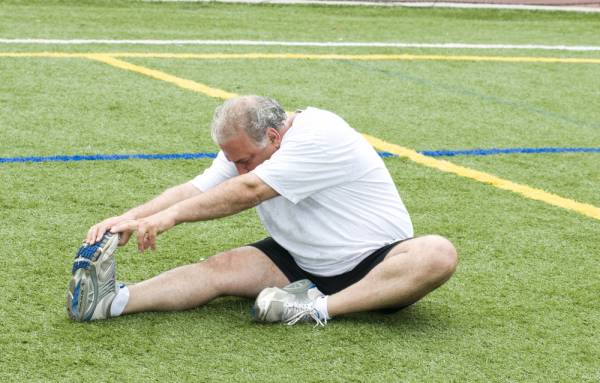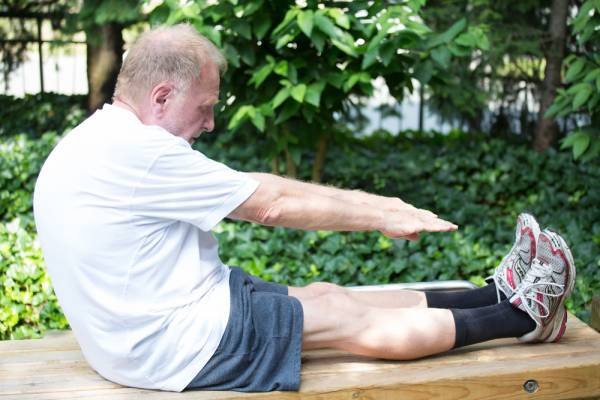Weightlifting is a sport that requires a heavy use of muscles and vast amounts of flexibility, so stretches and mobilization are critical to succeed. This article provides details on how to incorporate stretches into your routine, to complement your training and aid your abilities.
Weightlifting is a sport that requires a heavy use of muscles and vast amounts of flexibility, so stretches and mobilization are critical to succeed. This article provides details on how to incorporate stretches into your routine, to complement your training and aid your abilities.
Stretching and Power Output
It is essential to first cover a few points that are commonly misinterpreted. It has been researched and discovered that static stretching before exercise can decrease performance output, especially in regards to power.
The natural reaction to this is to think we shouldn’t static stretch, as we will potentially experience performance decreases.
But what is neglected in this thought is the assumption that you currently have adequate flexibility to begin with.
If you don’t have the ability to attain required ranges of motion, the effects of static stretching will actually assist in your lifting.
“Don’t let your flexibility prevent you from attaining more efficient lifting or getting those well-deserved personal-record lifts.”
Youths are often assumed to have good flexibility. But in the Play Station era that we now live in, it is more likely to see youths with poor flexibly, considering the slump position usually maintained while working the games controller, sitting at a desk, etc.
So whether you are an adult or a youth athlete, here are the top stretches I advise for improving your weightlifting performance.
Hamstrings
Most of a child’s day is spent in school in a chair. This is similar for adults who sit at work for the vast majority of their day. This puts the person in a position where the hamstrings are shortened for a length of time.
So it is of no surprise that the hamstrings require stretching to attain the adequate length and range of movement required in weightlifting.

Many people go their whole lives using this hamstring stretch…

…but the most basic stretch is also the most effective.
Typically kids and adults are taught very basic stretches, putting one leg in a slightly bent position while the other is straight. This may be a slight stretch, but it isn’t accomplishing a great deal.
Instead, simply reaching down to touch your toes while maintaining straight legs is far more effective. Widening the feet and then reaching to each foot works well, also.
Ankle Mobility
It’s not often you are required to maximize the range of motion at the ankle, but for weightlifting, this is almost essential to allow for a good receiving position in both the snatch and clean.
Good ankle mobility can best be attained with a combination of things.
First, a stretch:
- Stand on a step with your forefoot and toes on the step, and the heel and mid-foot hanging off.
- Lower and raise the heel as low and as high as physically possible. This should encourage a nice stretch.
After that we do the knee-to-wall mobility exercise:
- Stand in front of a wall in a split position with all your weight distributed to your front leg.
- Without lifting your heel off the floor, drive your knee forward until it touches the wall, and then return to the start position.
- If this was easy, move the foot backward half an inch and repeat.
- Continue to increase the challenge until your heel starts to lift off. When that happens, return to the last distance you were still able to complete properly.
- Do this for both legs and monitor if both legs are equal distance from the wall or thereabouts. Imbalances are common and should be identified when possible.
Another form of stretch that is nice and easy involves resting a barbell across your knees while in a squat position. For an explanation, watch this video at around the two-minute mark:
Shoulders
Catching a snatch in the right position requires good shoulder mobility. Referring back to the lifestyle our kids currently enjoy, being a keyboard warrior or a games-console king generally results in a slumped upper-body and shoulder posture.
This is going to impact the range of motion they are able to attain at the shoulder. Same goes for adults, if you are sitting like this at your desk all day.
“Having a thorough and regular stretching routine will keep your body more injury resistant, prevent compensation patterns or overuse of a muscle from occurring, and allow you to feel stable and balanced.”
Stretching the shoulder is no easy feat. The shoulder has many muscles that cross over the joint, such as the biceps, triceps, rotator cuff, and deltoid. The pecs, specifically pec minor, influence the slumped shoulder posture, as well.
Here is my personal favorite and weightlifting-specific stretch that attacks the shoulders and hips, and it hasn’t failed me yet. You will need a partner for this one, though.
- Have the athlete squat down into the bottom position with the hands interlocked and behind the head.
- Stand behind the athlete and push your shin into his or her lower back and glutes so you are pushing the hips forwards.
- While doing this, pull the elbows of the athlete backward to open up the chest. This focuses on the pecs, but puts the athlete into a position similar to the snatch receive position.
Here is a video showing a similar, but somewhat more aggressive version. Please, be more careful and considerate when applying this stretch.
Be a Routine Creature
Don’t let your flexibility prevent you from attaining more efficient lifting or getting those well-deserved personal-record lifts.
Get a routine of stretches going before and after your lifting. While the shoulders, hips, and ankles are the most likely areas to create an issue, this is not to say other areas don’t also require attention.
Having a thorough and regular stretching routine will keep your body more injury resistant, prevent compensation patterns or overuse of a muscle from occurring, and allow you to feel stable and balanced during your lifts.
Check out these related articles:
- Mobility for the Start and Bottom In Olympic Weightlifting
- An Easy Method for Teaching a Perfect Weightlifting Start Position
- How Warming Up the Right Way Can Still Go Wrong
Photo 1 courtesy of Becca Borawski Jenkins.
Photos 2 and 3 courtesy of Shutterstock.






